Tobia cabbage, description and characteristics, agricultural technology, harvesting and storage
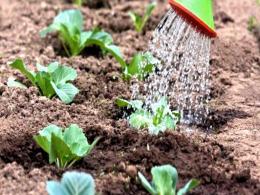
White cabbage is a universal product that is used all year round, preparing various culinary masterpieces from it.
Tobia cabbage has the best taste and characteristics. Housewives and gardeners often prefer this particular variety, for good reasons.
Content:
- Tobia cabbage, variety description, photo
- Features of the variety, advantages
- Landing
- Care
- Disease and pest control, prevention methods
- Tobia cabbage yield, harvesting and storage
Tobia cabbage, variety description, photo
Tobia cabbage is considered a hybrid; it was bred in 2005 by Dutch breeders. The species is intended for cultivation on a large scale, suitable for many regions of the Russian Federation and Ukraine.
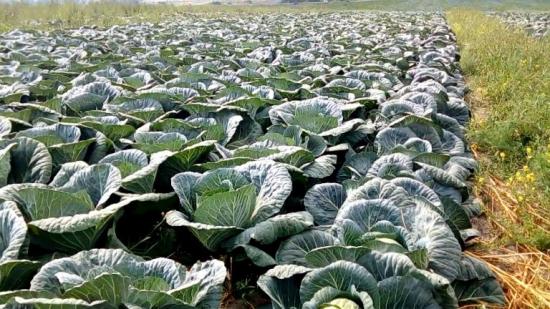
Description of culture:
- The variety is early ripening. The growing season is 3 months from the beginning of germination.
- The plants are low-growing, the stalk is small. It is thanks to this that the head of cabbage contains as much useful substances as possible.
- The leaves, internal and external, are dark green in color, covered with a coating of wax on top, and have a slight blistering and density. There is wavyness at the edges. When cabbage ripens, the leaves curl as much as possible, so when cut, there are practically no voids or gaps.
- The head shape is round. When cut, it is white, sometimes yellowish.
- Cabbage weighs approximately 5 kg, in very rare cases it can reach 7 kg with good care.
The taste of cabbage is tender and juicy, there is no bitterness.
Let's watch a video about winter varieties, in particular about Tobia cabbage:
Features of the variety, advantages
A feature of this crop is good transportability and marketable appearance. The leaves are so dense that harvesting can be done by machine. This saves a lot of time and effort.
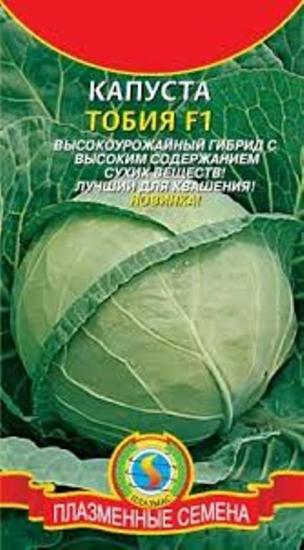
Benefits of Tobia cabbage:
- not capricious to climatic conditions;
- there is a pleasant sweetness and no bitterness, which is typical for other varieties of cabbage;
- high yield rates;
- not susceptible to diseases, especially fusarium wilt;
- It is actively used in the culinary field; its taste is especially appreciated when pickled and pickled.
Landing
Recommendations for planting:
- Planting seedlings in open ground on the fortieth day, it is during this period that up to 5 leaves appear on the stem, and the roots become stronger.
- It is worth taking the selection of soil responsibly. Tobia cabbage prefers a loamy substrate. Under no circumstances should acidic soil be used. To reduce the acidity of the soil, add wood ash, humus, dolomite flour, phosphorus-potassium fertilizers or lime.
- This crop requires good lighting, this must be taken into account when selecting a site. Lack of light will lead to the formation of a small head, the head of cabbage becomes loose.
- It is better to plant this crop in places where tomatoes, cucumbers, beans, onions, grain crops and carrots were previously grown. The planting site must be changed every 5 years.
- The distance between rows is 60 cm, and between holes is 50 cm.If you plant everything according to the standard, the heads of cabbage will be the same in size and will ripen at the same time.
- The seedlings go deep into the soil up to the first leaf and are compacted with soil on top. Water a little so that the water does not pull the plant down.
Rules of care
Soil moisture and watering - very important points. The crop should be watered regularly and often. Approximately two liters of water are poured into one hole when the plant is young. In the future, up to five liters of liquid are spent on one bush. A sufficient amount of water will allow the root system to strengthen faster. When the weather is rainy, watering should be limited to avoid fork rotting.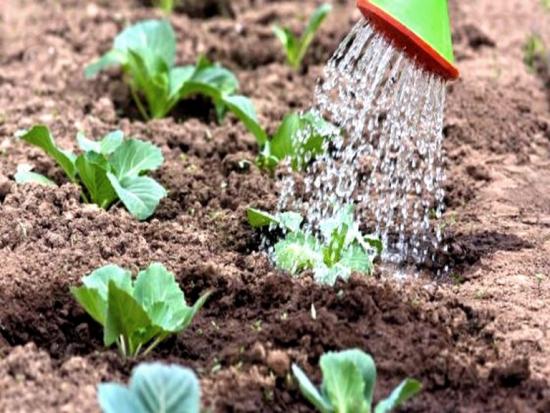 .
.
Weeds should be removed as they appear. If the weed is not pulled out in a timely manner, it can contribute to the proliferation of pests and diseases.
Loosening the soil after heavy watering is very useful. This procedure saturates the earth with oxygen.
It is better not to use chemicals for fertilizing, then the cabbage will be free of nitrates. Gardeners use natural fertilizers: chicken manure, mullein, a solution with fermented grass, an extract prepared from wood ash.
These simple steps will help improve taste and product quality, and good fruiting.
Let's watch a useful video about growing winter cabbage:
Disease and pest control, prevention methods
Tobia cabbage is not susceptible to insect attacks and diseases if preventive manipulations are carried out in a timely manner.
The only insect that can harm the product is the cabbage butterfly caterpillar.
There are no drugs that would serve as a deterrent. Therefore, they use the traditional method.Spray the culture with saline solution, valerian, infusion of potato tops and pine needles, and soap solution.
For preventive purposes, the garden plot is treated with wood ash, scattering it over the surface of the soil; 2 kg are used per square meter. Instead of wood ash, you can use cayenne pepper and tobacco dust.
Tobia cabbage yield, harvesting and storage
The yield is good; 20 kg of product can be harvested from one square meter. If the crop was planted in large volumes, then at least 100 tons come out of one hectare.
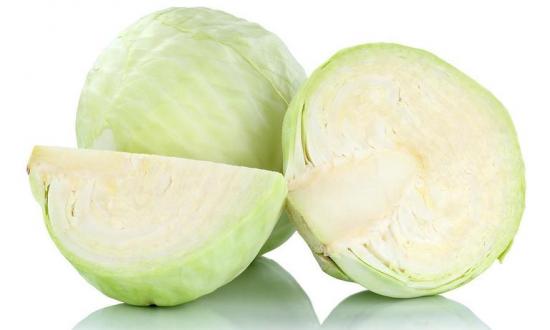
The harvest is harvested in dry, cloudy weather.
Collection is carried out by machine or manually. If you choose the manual method, use a sharp knife to cut the head and cut it so that the length of the stalk is at least 8 cm.
Store the product in the basement or refrigerator, the optimal temperature is from 0 to plus 5 degrees, indoor humidity is from 90 to 95%. If the vegetable is stored in the cellar, it is necessary to put the cabbage in a wooden or cardboard box.
The shelf life is 3 months. If each head is wrapped in paper or coated with clay, then storage can be extended for several more months.
So, Tobia cabbage is a wonderful variety; good yield and high taste make it in demand in the culinary and gardening spheres.

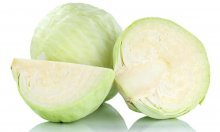
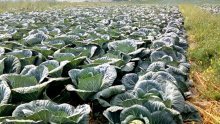
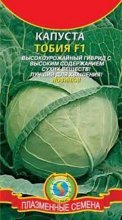
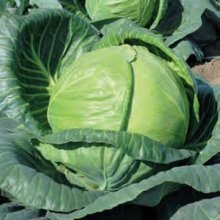
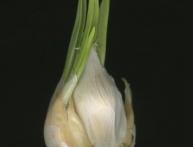


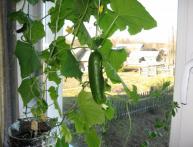
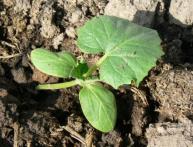
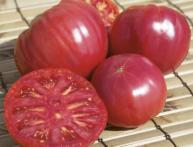

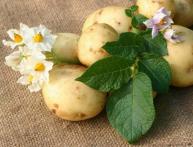
Comments
Very beautiful looking Tobia cabbage. If it is early ripe, it will not be stored for long. Therefore, it is better to plant late varieties of cabbage for storage, and use Tobia in the summer for preparing salads and borscht, i.e. eat it from mid-summer until October.
I don’t know this variety of white cabbage very well, although I didn’t notice any visual differences from the varieties that are most often used in the region. I will need to search in the spring from those summer residents from whom I buy seedlings and try to plant them.